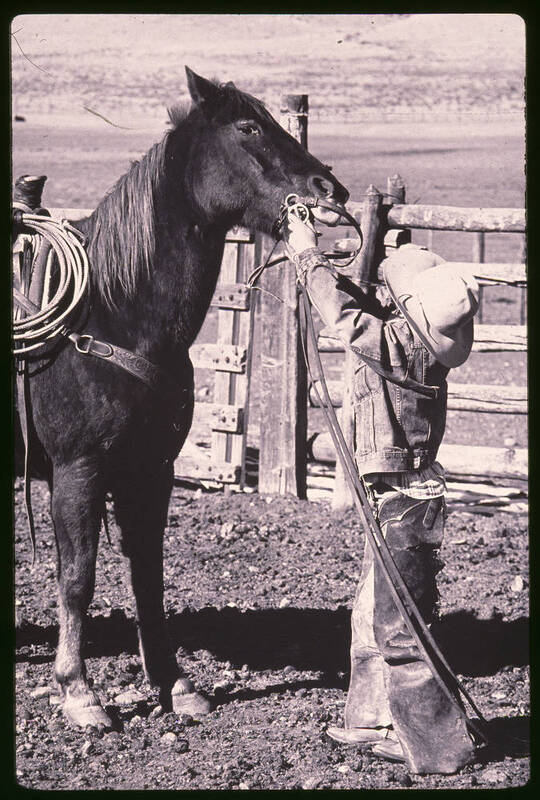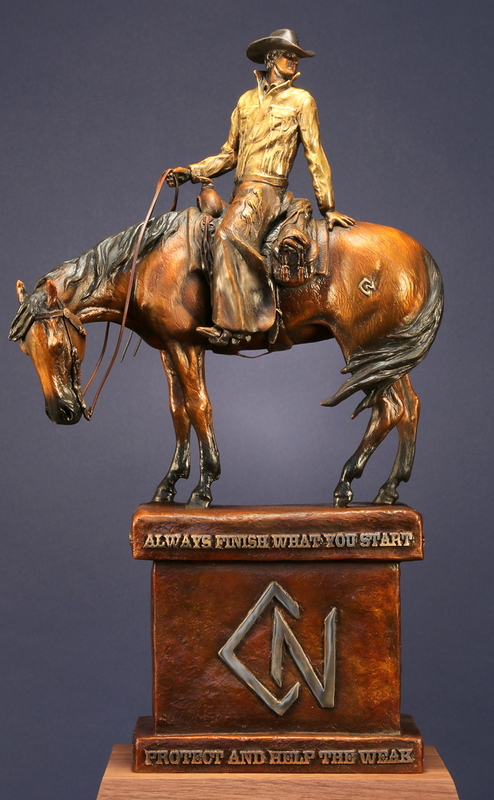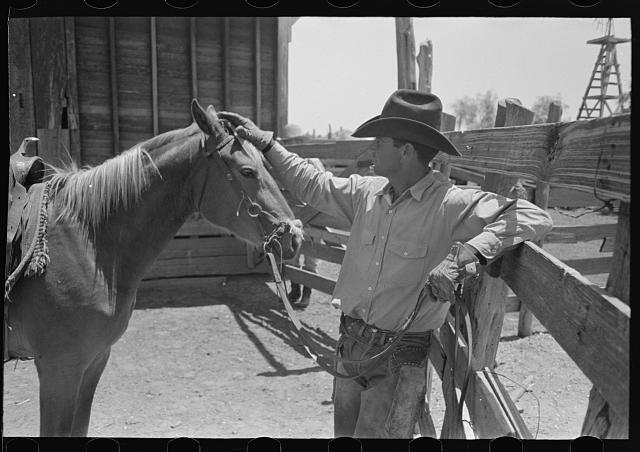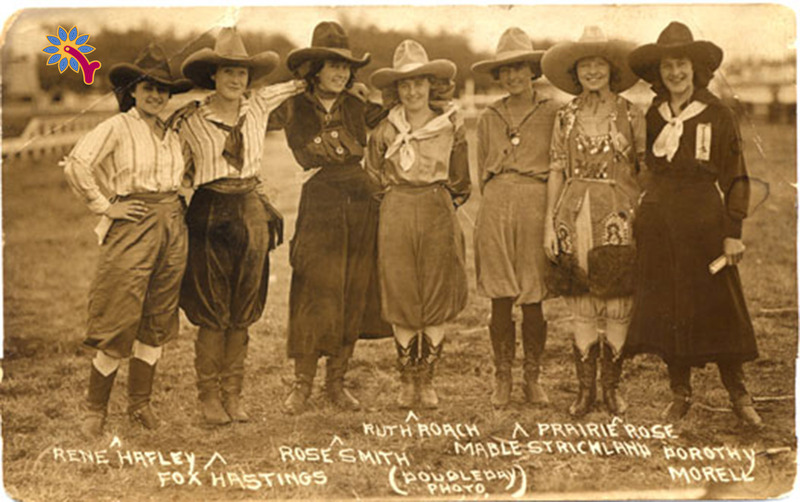Cowboy Culture
The Importance of the Horse
"A horse doesn’t care how much you know until he knows how much you care. Put your hand on your horse and your heart in your hand." - Pat Parelli
For as long as there have been cowboys, there’s always been a horse and while the cowboy wouldn’t be a cowboy without his horse, the West would never have become what it was without the help of the horse either. Because the horse’s hard-working and loyal characteristics, it was just as important to the settlement of the West as the people who lived in it. The horse first came to America from Spain along with the cattle and was originally used for transportation. In addition, the Native Americans captured horses for their own use in war, hunting, and transportation. Horses have long since been used by farmers to help plow fields, pull wagons, and herd cattle from place to place. Before the invention of the tractor, the horse was a farmer’s most important tool and its importance is still argued across farmer communities today.
Cowboys and cowgirls who make a living on the road, driving across the country from rodeo to rodeo, rely heavily on the horse under their saddle. Without a solid horse to ride, they wouldn’t be able to afford their chosen lifestyle. The bond between a cowboy and his horse is an important one. The cowboy trusts his horse to keep him safe and to help him get the job done while the horse relies on the cowboy not to ride him into danger. It’s a mutual trust that allows the cowboy to keep on living, working, and making a living for himself.
John Running - Photographer
In 1967, John Running, after realizing his interest in people, cultures and relationships, entered his works in a local photography competition that was sponsored by a Flagstaff supply store called Jean and Trox and earned first place. His prize comprised of a Nikon camera and light meter. In 1969, John had his first show at the Student Gallery at Northern Arizona University and graduated from NAU that same year. John launched his freelance career 1970 and opened his first studio in downtown Flagstaff a year later. During the 1970s, Running refined his skills, while establishing and strengthening relations with the people and places of the Colorado Plateau and in 1973, he travelled down the Colorado River through the Grand Canyon for the first time. It was during these years that John began to photograph local demonstrations of the development of the San Francisco Peaks which, in turn, put him into communication with a diverse group of Native Americans that were trying their hardest to protect their sacred lands. His connection with the Navajo was reinforced even more when he created a series of documentary portraits of Navajo who were involved in the Navajo-Hopi land dispute in the late 1970s. The landscapes and people of the Colorado Plateau were a dominant theme throughout his work for the rest of his life.
The Cowboy Code
-Ride for the brand.-
-Your word is your bond.-
-Be tough but fair.-
-Do what has to be done.-
-Protect and help the weak.-
-Always finish what you start.-
-Take pride in your work.-
-Live each day with courage.-
The absence of written law in the west made it essential for the cowboy to set some of his own rules on how to conduct himself. This is how The Cowboy Code was developed. This set of rules came to be known as the “Code of the West.” These simple bylaws were never, and have never been, written into laws, but were valued on the range. Because there was no law, cowboys who lived in and developed the west were bound by these unwritten guidelines which centered on hospitality, fair play, loyalty, honesty, a profound respect for the land, and a strong work ethic. Although the cowboy living in the Wild West might’ve broken every law of the land, state and federal government, he took pride in safeguarding their own unwritten code. His failure to follow these laws did not bring official sentence, but the those who broke the code were treated, more or less, as community outcast.
Throughout the years, several forms of these rules for behavior were documented under a variety of titles. Some examples of these variations include: The Code of the West, Gene Autry’s Code of Honor, Cowboy Code of Ethics, the Lone Ranger’s Creed, and Roy Rogers Riders Club Rules.
The Cowboy's Prayer
Our gracious and heavenly Father, we pause in the midst of this festive occasion, mindful of the many blessings you have bestowed upon us. As cowboys, Lord, we don't ask for any special favors. We ask only that you will let us compete in this arena as in the arena of life. We don't ask that we never break a barrier, draw around a chute-fighting horse, or draw a steer that just won't lay. We don't even ask for all daylight runs. We only ask that you help us to compete in life as honest as the horses we ride and, in a manner, as clean and pure as the wind that blows across this great land of ours. Help us, Lord, to live our lives in such a manner that when we make that last inevitable ride to the country up there, where the grass grows lush, green and stirrup high, and the water runs cool, clear and deep, that you, as our last Judge, will tell us that our entry fees are paid. Amen.
"The Cowboy's Prayer," was written by Clem McSpadden, who was an inductee to the Pro Rodeo Hall of Fame and one of the most highly respected rodeo announcers of his time. This prayer has become a foundation for cowboys coming from all walks of life and has been tremendously prevalent and performed for years before the commencement of rodeos across the country. While the verses to the prayer have been changed several times over the years, the prayer’s underlying message has remained the same.
Russell Lee - Photographer
The black & white image above was taken by photographer, Russell Lee. Lee started experimenting cameras in 1935 in order to capture miners and document conditions of coalmines in Pennsylvania. His budding interest in social problems and his attraction for using photography to detail social conditions brought him in contact with other photographers who were involved with the documentation program of the Historic Division of the Resettlement Administration which was later retitled the Farm Security Administration. As part of the crew, Lee's main job was to document rural areas with the objective of making Americans living in metropolitan areas aware of the difficulties that resident farmers, sharecroppers, and migrant workers who were affected by drought and the Great Depression were living.
Ralph Russell Doubleday - Photographer
Ralph Russell Doubleday was a figurehead when it came to rodeo photography. He started to become fascinated by photography in 1900 when he began photographing local events. Doubleday traveled to the Cheyenne Frontier Days Rodeo in Wyoming where he photographed his first rodeo in 1910. It was there that he photographed Gus Nylen getting thrown from bucking horse called “Teddy Roosevelt,” and that image is considered to be the first photograph of a man being bucked off a horse at a rodeo. In appreciation of Doubleday’s photographic achievements as well as his advertising and documentary accomplishments that honor the sport of rodeo, the Rodeo Historical Society inducted him into the National Cowboy & Western Heritage Museum’s Rodeo Hall of Fame in 1988.



